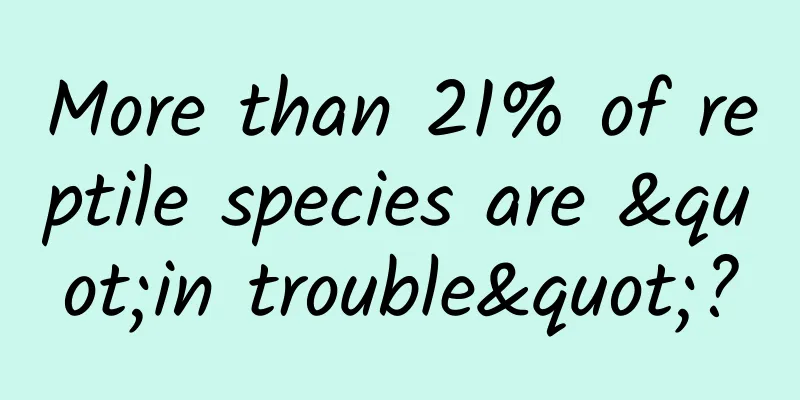More than 21% of reptile species are "in trouble"?

|
Science and Technology Daily reporter Zhang Mengran A study recently published in the British journal Nature conducted a comprehensive assessment of more than 10,000 reptile species worldwide and found that more than 21% of species are at risk of extinction. The results show that urgent conservation actions are needed to prevent some reptiles from going extinct, including many crocodiles and turtles. Researchers have conducted comprehensive extinction risk assessments for birds, mammals, and amphibians, but there has been no comprehensive assessment for reptiles. Until now, conservation strategies for reptiles have relied on the ranking and distribution of other animals on the International Union for Conservation of Nature (IUCN) Red List to guide relevant policies and action priorities. A team of American public welfare natural scientists classified reptiles using the levels of the IUCN Red List to assess the extinction risk of reptiles worldwide. Among the 10,196 assessed species, they found that at least 1,829 species were at risk of extinction (divided into vulnerable, endangered, and critically endangered at different levels). Crocodiles and turtles are among the most vulnerable species to extinction, with 57.9% and 50.0% of species endangered, respectively. The research team pointed out that factors such as agriculture, logging, urban construction, and invasive species are all sources of threats to reptiles, but they said the threat posed by climate change remains unclear. While reptiles in arid environments had been predicted to be most at risk (where reptile diversity is high), the researchers found that forest-dwelling species were at greater risk, perhaps because forest reptiles are more exposed to specific dangers. The researchers note that many of the threats facing reptiles are similar to those facing other animal groups, and suggest that conservation measures to protect these populations, including habitat restoration and invasive species control, may also benefit reptiles, but they caution that urgent conservation action is needed to prevent some reptiles from going extinct. Source: Science and Technology Daily |
<<: “I’m autistic again”… What are real autistic people like?
Recommend
University of Mainz, Germany: Study finds link between soil pollution and heart disease
Pesticides and heavy metals in soil may have adve...
The KOL purchased for 30 million has high conversion rate!
In recent years, driven by major MCN agencies, ad...
Marchionne intends to spin off Jeep and Ram brands to form independent companies
According to foreign media reports, FCA CEO Sergi...
Zhihu promotion operation: Zhihu sorting rules
I remember when I first started using Zhihu, I wa...
The thousand-year-old mummy turned out to be a cancer patient...
In the early history of cancer, people hardly eve...
Lan Guilian and Lan Ziyun's illustration training camp will end in April 2021 [HD quality with materials]
Lan Guilian and Lan Ziyun's illustration trai...
How can short videos use Baidu to accurately attract traffic?
I haven’t written an article for a long time. Tod...
Quantum dot vs. OLED: Which screen technology is better?
Although OLED is no longer a new technology, panel...
Why can't you create a knowledge carnival in the Himalayas?
For the platform, creating a nominal "festiv...
A comprehensive review of China's mobile internet advertising in 2019
The most important turning point is that with the...
BMW and Great Wall Motors set up a new joint venture to produce electric Mini
According to foreign media reports, although Chin...
【Creative Cultivation Program】The older you get, the happier you are? What are our misunderstandings about “old people”?
Author: Tang Yicheng When we think of getting old...
Android native UI toolkit Jetpack Compose gets version 1.6 update: page scrolling performance improved by 20%, "stable" mark introduced, etc.
IT Home reported on January 29 that Google recent...
Liu Tong talks about survival in the workplace: 20 heartfelt answers to key questions
Course Catalog: 01 【Editorial】Resolve workplace d...









